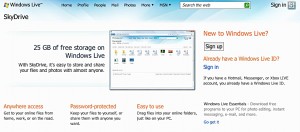by David Strom
Protecting your business electronic records has gotten easier and more affordable, thanks to plenty of different services that can make backups of computer files across the Internet.
These online services are useful for three reasons. First, for a few hundred dollars annually, you can buy some inexpensive offsite protection in case of disaster, fire, or theft. Second, they can work automatically so you don’t have to remember to make the backup copies. Finally, once they are set up they don’t take a lot of skill to maintain.
The trick is figuring out which of these online backup providers can offer the right combination of services, support and price that will meet your particular needs and protect all the computers on your network. Given that there are more than a dozen different providers (see my online backup provider comparison table with links to these and other vendors by clicking the underlinked link), it seems overwhelming at first to figure out which is the right service for your needs. Here are some questions to answer:
Do you have any data on non-Windows machines that you want to have backed up? Several of the providers support both Macs and Linux machines as well as Windows.
Do you want to have a single account that can back up multiple computers and multiple users? You might want to look at providers that don’t limit the number of users per account, such as Iomega’s iStorage Professional Edition, Onlinebackupvault.com, and StorageGuardian.com.
Do you have a lot of files to back up? You might be interested in providers that don’t limit how much you can store or don’t charge for large backups, such as JungleDisk, Zmanda and ElephantDrive, It is also worth looking at Microsoft’s Live Skydrive service who offers 25 GB for free, and Adrive.com offers 50 GB.
Speaking of free, most of the providers offer limited free trials for 15 or 30 days, and it is worth checking out what is involved with their software and whether it suits your needs before you pony up your cash. It is also a good idea to test how to recover a deleted file to see what the process is and how long it will take to do the first complete backup of your data. Depending on your Internet connection, it could take days or even weeks to complete. One way around this is to buy the appliance from 3x.com – they designed this to do the backups across your local network, then move it offsite and do the incremental backups across the Internet.
How long does the provider keep its backups? Can you distinguish among different file versions when you have to recover a file? Again, trying out the service first will help you understand these issues.

{ 2 comments }
I just left xdrive for elephantdrive. So far, much better. I actually got an email response to a question and the mapped drive feature is very handy.
Trying the different services is key. Each one offers different features like backing up locked files and some services do not backup executable files, so people need to test them out. For home backups Carbonite and Mozy seems to be the leaders as far as market, but ElephantDrive works great as well. If people have locked files I have found that Mozy seems to work best.
Comments on this entry are closed.